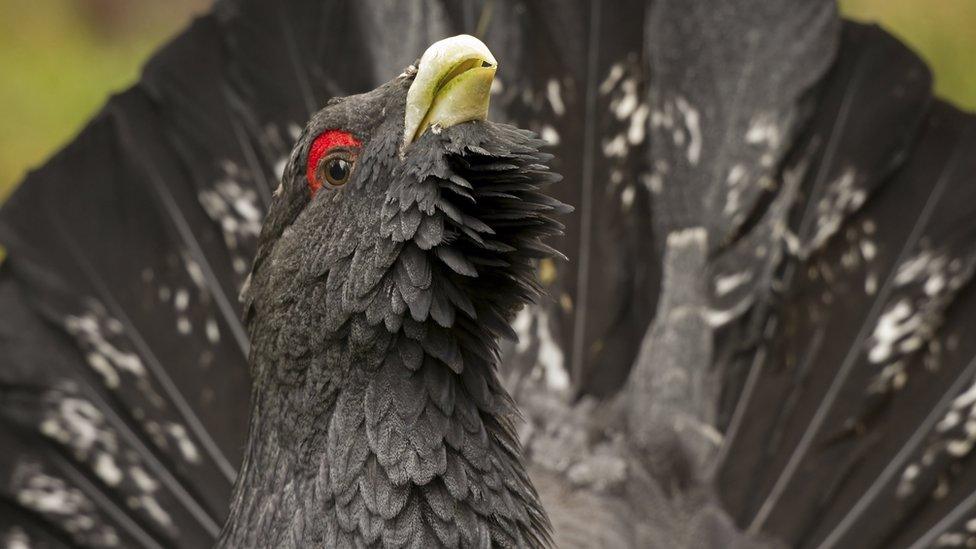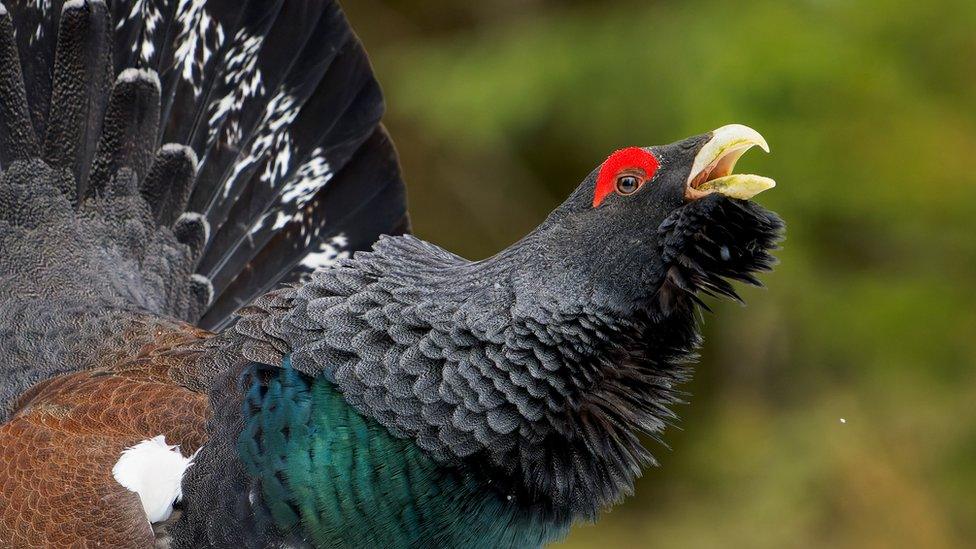Cairngorms tourists urged not to seek out rare capercaillie

At a glance
Capercaillie are one of the UK's rarest birds
About 85% of the population live in the Cairngorms National Park
The park's Cairngorms Capercaillie Project has launched a campaign urging people not to disturb the birds
- Published
Visitors to the UK's largest national park have been asked not to go in search of one of its rarest birds.
The Cairngorms are home to capercaillie, a large woodland grouse whose numbers have fallen to the lowest level in 30 years.
In the UK, the bird is only found in Scotland and fewer than 600 are thought to survive.
In spring, male capercaillie gather at sites known as leks where they compete for the attention of females.
It is illegal to disturb capercaillie during the breeding season.
Habitat loss
The Cairngorms Capercaillie Project has launched a social media campaign called Lek It Be to raise awareness of the risks to the wildlife.
The campaign includes messages from ornithologist and broadcaster Iolo Williams, police, wildlife photographers and Cairngorms National Park rangers.
About 85% of the UK capercaillie population live in the national park.
They are described as very shy and elusive birds, often perching in trees or hidden away on the forest floor.
They are mostly found in Scots pine forests that have a rich growth of blaeberry on the forest floor.
Predation, habitat loss and cold, wet springs have been blamed for their decline.
More stories on capercaillie
- Attribution
- Published30 September 2022

- Published25 February 2022
